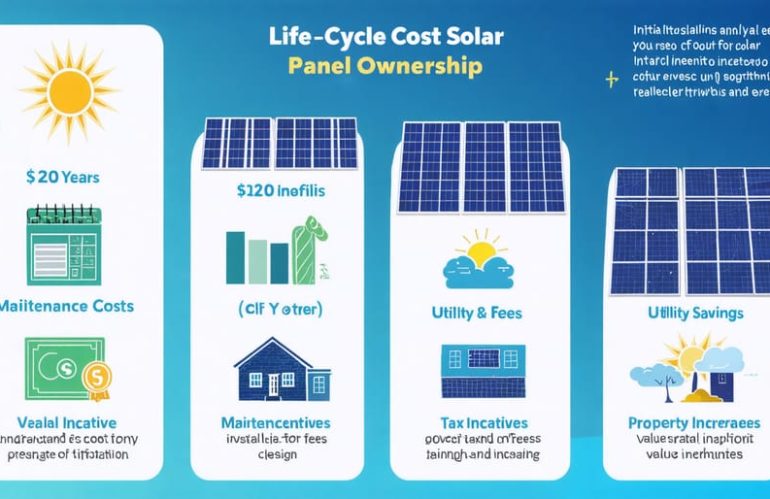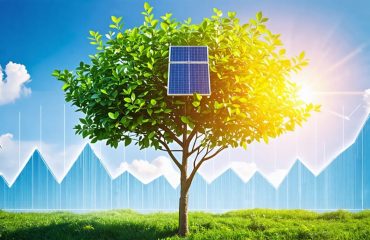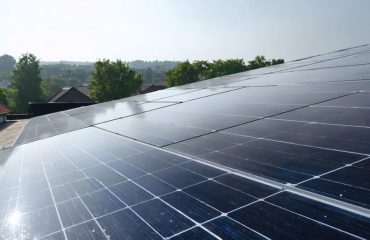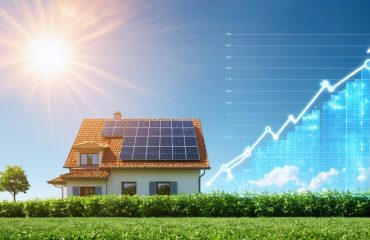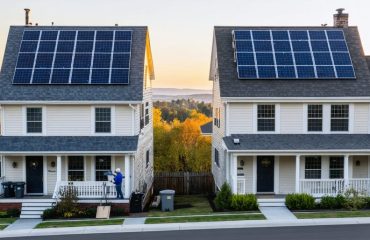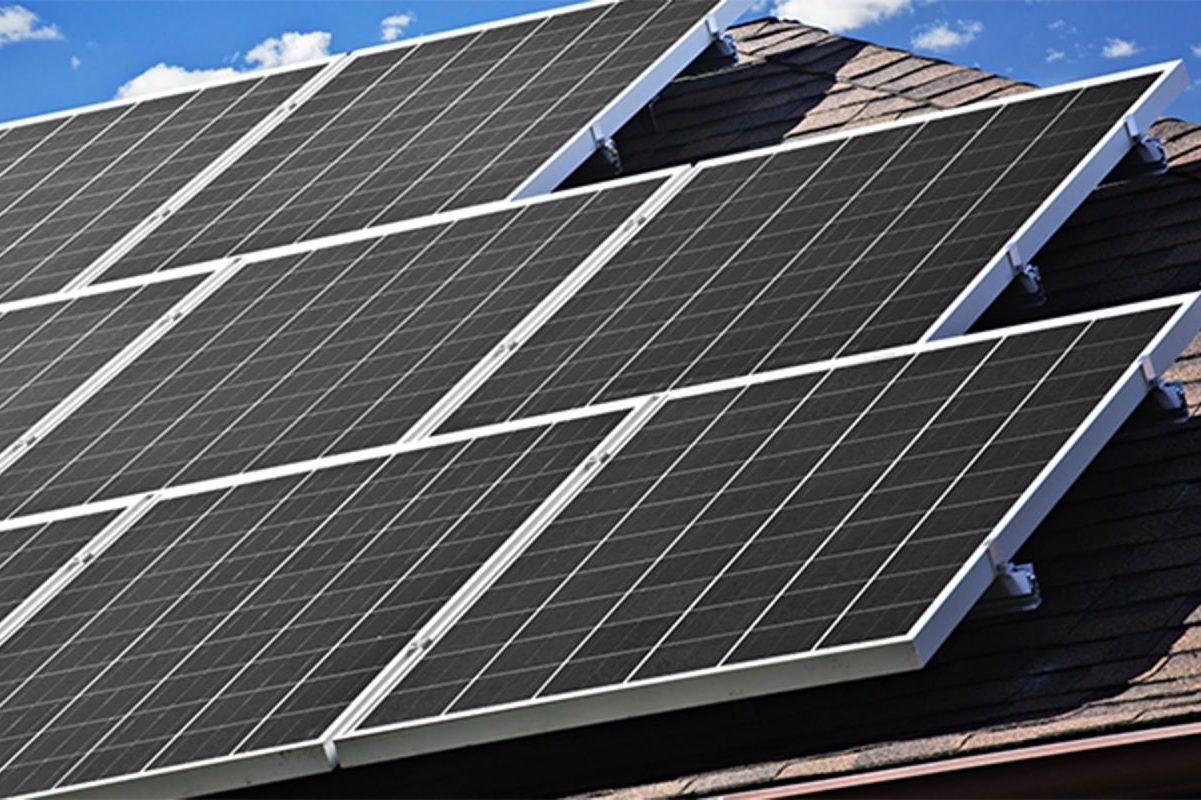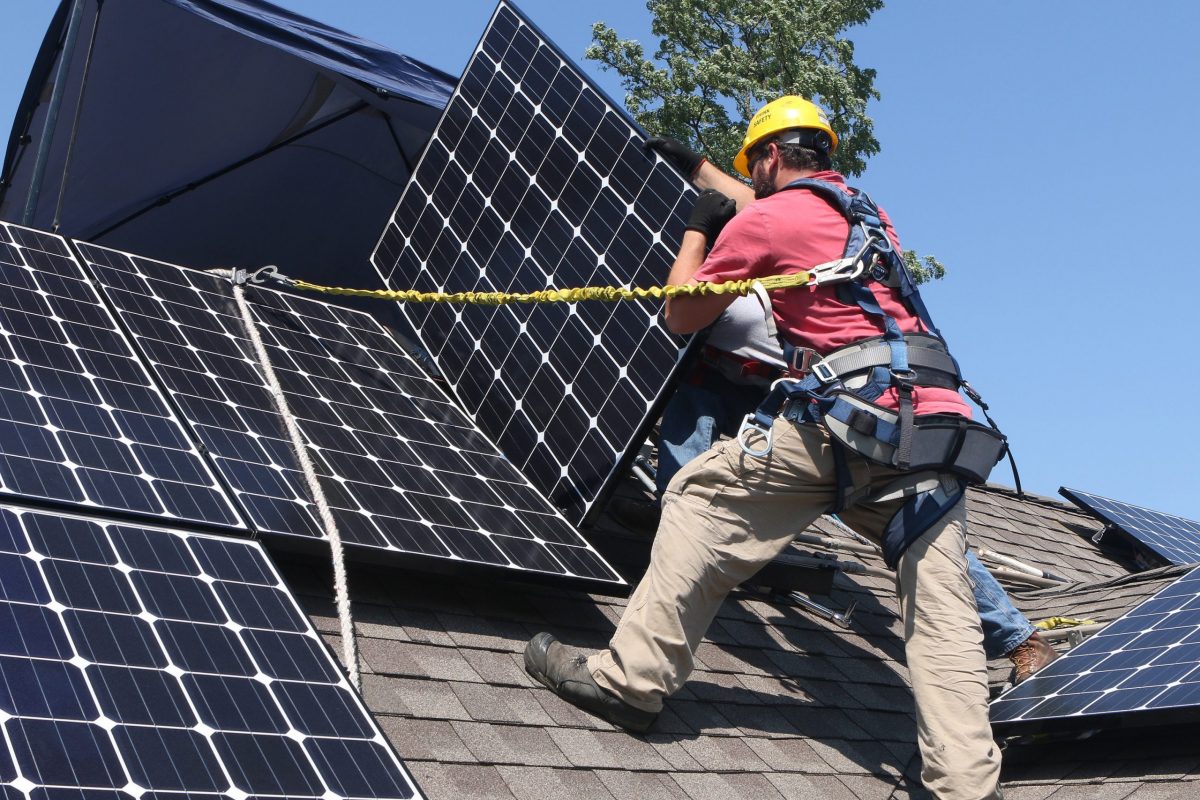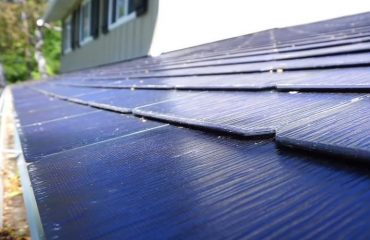Making smart financial decisions about solar energy requires looking beyond the price tag. Life-cycle cost analysis reveals the true value of your solar investment by examining every expense and benefit over the system’s entire lifespan. From initial purchase and installation to ongoing maintenance, utility savings, and potential incentives, this comprehensive approach helps you calculate your solar investment returns with confidence.
Unlike traditional energy solutions that burden you with ever-increasing utility bills, solar installations typically pay for themselves through decades of reliable power generation. Modern panels now regularly last 25-30 years while requiring minimal maintenance, making them an increasingly attractive long-term investment for homeowners seeking both environmental and financial benefits.
By understanding the complete financial picture – including tax credits, energy savings, maintenance costs, and property value increases – you can make an informed decision about solar power’s role in your home’s future. This analysis empowers you to maximize returns while contributing to a more sustainable energy landscape.
What Is Life-Cycle Cost Analysis?
Key Components of Solar LCCA
A comprehensive solar LCCA includes several key components that work together to provide a complete financial picture of your investment. Initial costs cover the purchase and installation of solar panels, inverters, mounting hardware, and necessary permits. These upfront expenses typically represent the largest single investment in your solar journey.
Operating costs form the next major component, including routine maintenance, cleaning, and occasional repairs. While solar systems are generally low-maintenance, factoring in these costs ensures accurate long-term projections. Energy savings calculations consider your current electricity rates, expected energy production, and anticipated utility rate increases over time.
Insurance and warranty coverage also play crucial roles in your LCCA. Most quality solar panels come with 25-year warranties, while inverters typically carry 10-year guarantees. These protections help minimize unexpected repair costs throughout the system’s lifetime.
Financial incentives significantly impact your analysis, including federal tax credits, state rebates, and local incentives. Property value increases should also be considered, as homes with solar installations often command higher resale prices.
End-of-life considerations complete your LCCA, including potential panel recycling costs or upgrade opportunities after the system’s 25-30 year lifespan. While these costs are far in the future, including them provides the most accurate lifetime cost assessment.
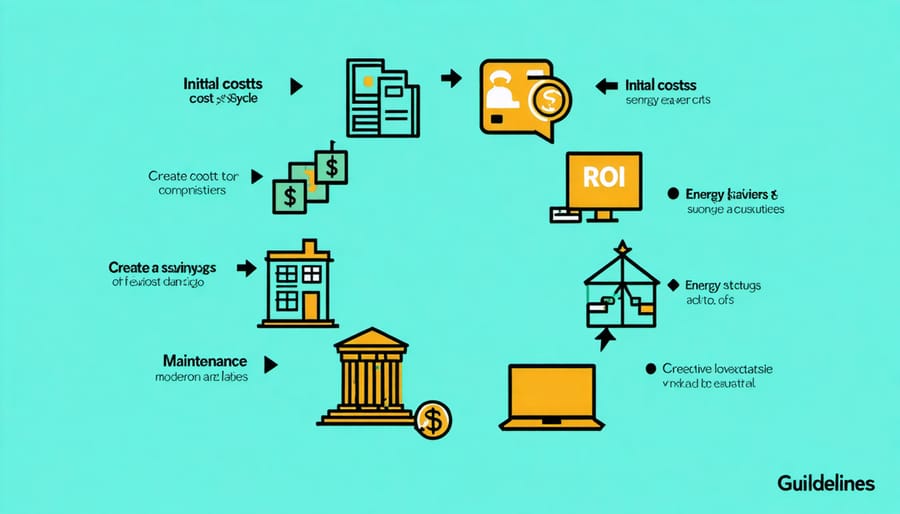
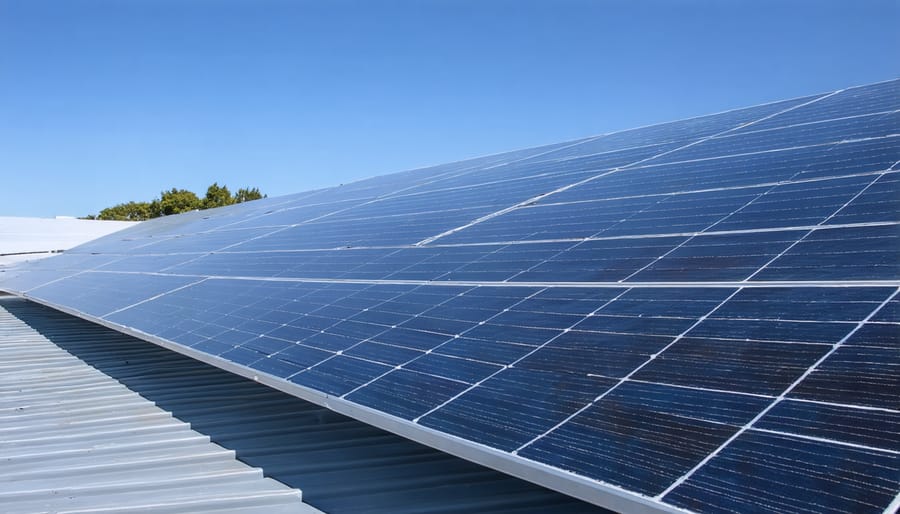
Initial Investment Costs
Available Tax Incentives and Rebates
Several attractive financial incentives can significantly reduce your solar panel installation costs and improve your overall return on investment. The federal solar tax credit, also known as the Investment Tax Credit (ITC), allows you to deduct 30% of your solar system’s cost from your federal taxes. Many states offer additional tax credits, ranging from 10% to 25% of system costs, while some provide cash rebates that can save you thousands more.
Net metering programs, available in most states, let you earn credits on your utility bill for excess energy your system produces. Some utility companies also offer performance-based incentives, paying you for the solar energy your system generates over time. Local governments may provide property tax exemptions, ensuring your home’s value increase from solar panels doesn’t result in higher property taxes.
These incentives can substantially improve your system’s life-cycle costs, often reducing payback periods by several years. Remember to check available incentives in your area, as they can vary significantly by location and may change over time.
Operational and Maintenance Costs
Regular Maintenance Requirements
Regular maintenance is essential for maximizing your investment’s lifespan and performance. Solar panels typically require minimal upkeep, with annual cleaning and inspection costs ranging from $150 to $300. Professional cleaning helps maintain optimal energy production and prevents debris accumulation that could reduce efficiency.
Beyond cleaning, you should budget for periodic system checks by certified technicians, usually every 2-3 years, costing approximately $200-400 per inspection. These checks ensure all components are functioning correctly and can identify potential issues before they become major problems.
The inverter, a crucial component that converts DC power to AC, typically needs replacement once during the system’s lifetime, usually between years 10-15, with costs ranging from $1,000 to $2,500. Modern microinverters may have longer lifespans but cost more initially.
Monitoring systems require occasional software updates, which are often free but may sometimes involve minimal subscription fees. Setting aside approximately $300-500 annually for maintenance creates a reliable buffer for routine care and unexpected repairs, ensuring your solar investment continues performing efficiently throughout its lifetime.
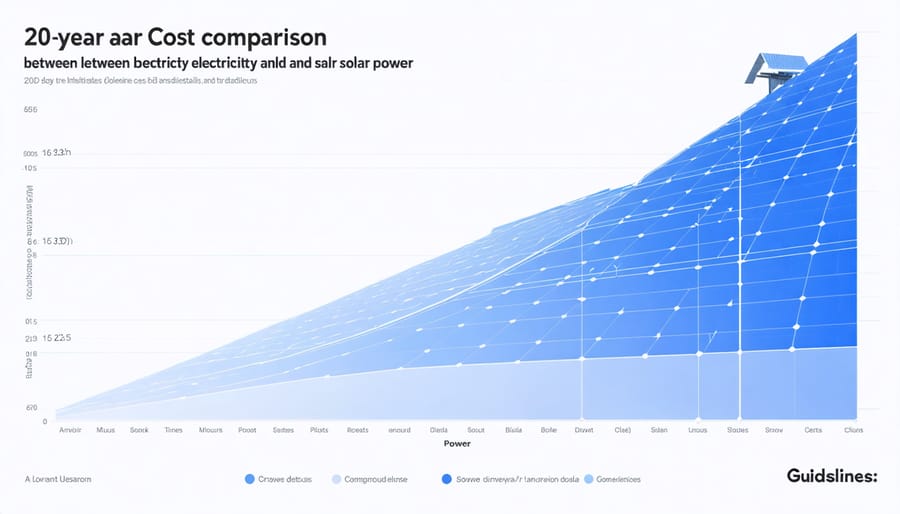
Long-Term Benefits and Savings
Energy Bill Reduction
A life-cycle cost analysis reveals significant monthly savings on energy bills through solar installation. Most homeowners see immediate reductions of 50-90% on their electricity costs, depending on system size and local utility rates. A typical 6kW solar system can save between $100-$200 monthly in moderate-climate regions, accumulating to substantial yearly savings. These reductions become even more valuable as utility rates continue to rise historically at 2-3% annually. The savings analysis should account for seasonal variations, with higher savings during summer months due to increased sunlight hours. Smart energy monitoring systems help track these savings in real-time, allowing homeowners to optimize their energy usage patterns and maximize their return on investment. When combined with energy-efficient appliances and proper home insulation, the monthly savings can increase even further.
Property Value Increase
Installing solar panels can significantly increase your home’s value, with studies showing an average premium of $15,000 for homes with solar systems. This boost in property value occurs immediately after installation and tends to grow over time as energy costs rise. Modern homebuyers increasingly prioritize energy efficiency and sustainable features, making solar panels a particularly attractive selling point. The value increase is most pronounced in areas with high electricity rates and solar-friendly policies, though benefits are seen across all regions. This property value enhancement represents a significant portion of your solar investment’s return, effectively offsetting the initial installation costs while providing immediate equity in your home.
Life-cycle cost analysis serves as an essential tool for making informed decisions about solar energy investments. By considering all costs and benefits over the system’s lifetime, LCCA provides a clear picture of the true value of your solar investment. This comprehensive approach helps you avoid unexpected expenses while maximizing your return on investment.
When properly conducted, LCCA reveals that solar installations often deliver significant long-term savings despite higher upfront costs. The analysis accounts for factors like reduced energy bills, maintenance requirements, potential repairs, and even property value increases. It also considers environmental benefits and potential incentives, giving you a complete understanding of your investment’s impact.
For homeowners considering solar energy, LCCA offers peace of mind by providing detailed insights into future costs and savings. This knowledge enables you to make confident decisions about system size, timing of installation, and financing options. Remember that while initial costs might seem daunting, the long-term benefits often make solar installations a financially sound choice for many households.
By using LCCA as your decision-making framework, you’re better equipped to make choices that align with both your financial goals and environmental values.

